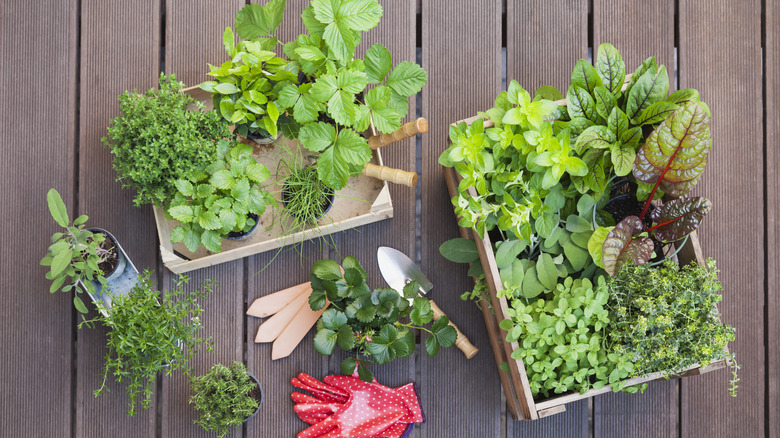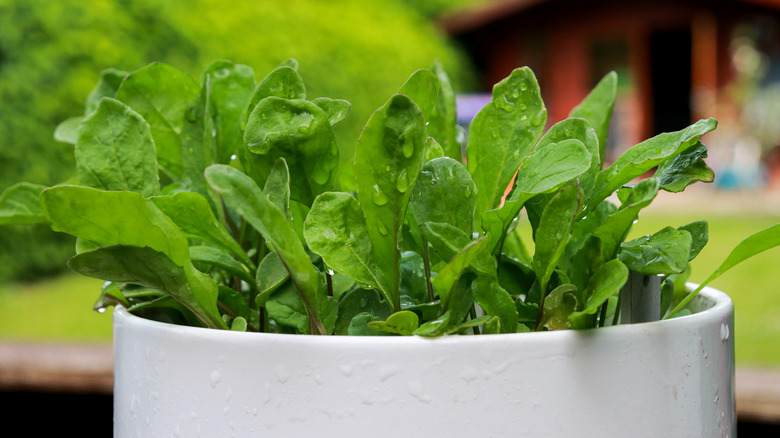The Fast-Growing Leafy Veggie You Should Grow In Pots For A Swift, Fresh Harvest
Cold-season vegetables present gardeners with a peculiar problem, especially in the spring. You might want to add it to your harvest, but the garden isn't really ready — and you may not be motivated to brave the unpredictable weather to get the garden in shape. But with a leafy green like spinach that grows quickly and prefers cold weather, pots can be the perfect solution.
There are many vegetables that are easy to grow in pots, but spinach is especially well-suited to container gardening. Spinach is a compact plant that doesn't require much space for root growth and can be planted about 2 inches apart. In other words, they can grow easily in pots. Additionally, spinach prefers cool temperatures, and will bolt once summer heat kicks in. So, even if you go to the trouble of preparing the garden beds and planting it in the ground, spinach probably won't last long.
Spinach is ready for harvest in about 45 to 50 days, usually April through May (or August through September if planting for a fall harvest). Many gardeners like to sow seeds every two weeks to have fresh spinach for as long as possible. And when you're planting in pots, you can always get an early start on the season and grow spinach indoors.
How to grow spinach in pots
Start with a pot that has a drainage hole and fill it with a good soilless potting mix that has plenty of nutrients for these fast growing plants. Find a place where your spinach will get full sun, or be prepared to move your pots around to follow the light. The seeds need soil between 45 and 65 degrees Fahrenheit to germinate, so if you're not sure the weather will allow for that in your area, consider keeping the plants indoors until they sprout. Keep in mind, spinach can withstand frost, but if you're growing it in pots, bringing it inside during freezing temperatures won't hurt.
Once you have spinach seedlings, they will need to be kept evenly moist. Test the soil to check for dryness regularly, and water when it's dry. Spinach can be prone to fungal diseases, so be sure to water at the base of the plants. If you started with a high-quality potting mix that's rich in organic matter, you may not need to fertilize these short-lived plants. If you find they need a bit of help, use a nitrogen-rich fertilizer — or learn about other ways to add nitrogen to your soil. When it's time to harvest, use these tips for harvesting spinach to encourage more growth.

